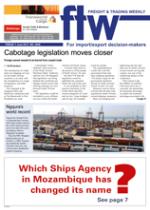A shift in trade away from the
former colonial powers to the
emerging giants is protecting
African countries from the global
downturn.
“China, India and Brazil are
consuming more and more of
Africa’s oil, commodities and
manufactured goods,” says the
African Economic Outlook 2013.
Produced annually by the African
Development Bank, the OECD
Development Centre, the Economic
Commission for Africa (ECA) and
the UN Development Programme
(UNDP), the report describes
African economic prospects for 2013
and 2014 as “promising”.
Africa’s economy is projected to
grow by 4.8% in 2013 and accelerate
further to 5.3% in 2014.
From 2000 to 2011, Africa’s
exports almost quadrupled in value,
from US$148.6bn
a year to US$581.8bn, according
to UN Conference on Trade and
Development
(Unctad) figures.
European Union and the United
States’ share of African exports fell
from 47% in 2000 to 33% in 2011 in
the case of Europe and from 17% to
10% for the United States.
In contrast, China increased its
share of African exports from 3.2%
in 2000 to 13% in 2011; India from
2.8% to 6%; Brazil from 2% to 3%
and the Russian Federation from
0.2% to 0.3%.
However, despite this
diversification, African exports are
still vulnerable to Europe’s debt
crisis, which the report warns “could
constrain Africa’s exports even
more”.
Risks on the African continent
include continued political
instability in Tunisia, Egypt and
Libya, as well as unrest in Mali and
Sudan.
The report argues that African
countries must tap into their natural
resource wealth to accelerate
the pace of growth and ensure
the process can benefit ordinary
Africans.
Shifting trade patters cushion Africa
07 Jun 2013 - by Ed Richardson
0 Comments
FTW - 7 Jun 13

07 Jun 2013
07 Jun 2013
07 Jun 2013
07 Jun 2013
07 Jun 2013
07 Jun 2013
07 Jun 2013
07 Jun 2013
